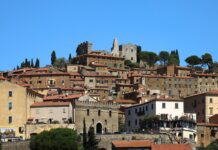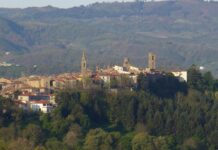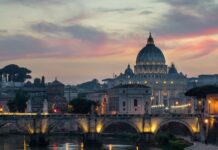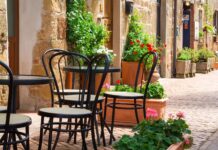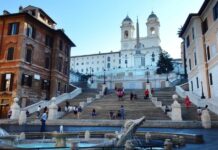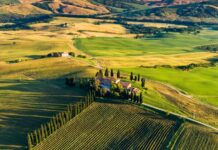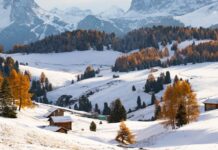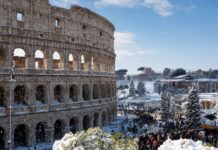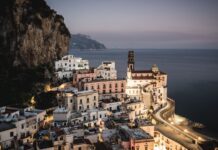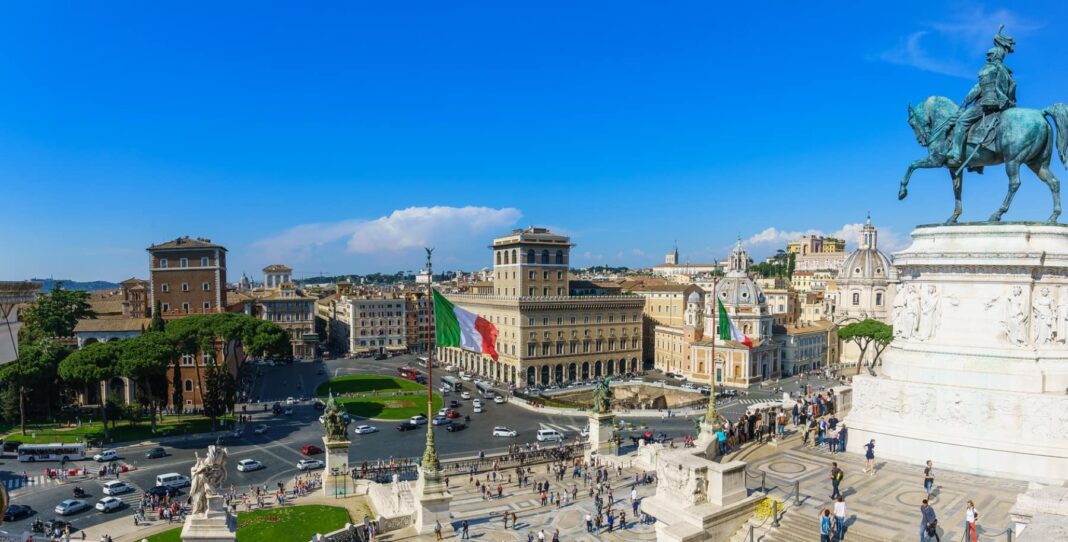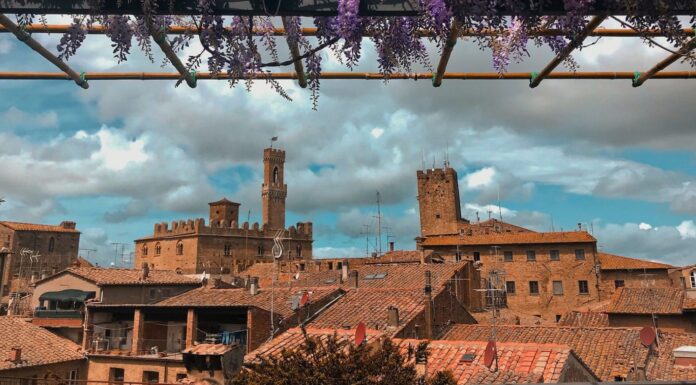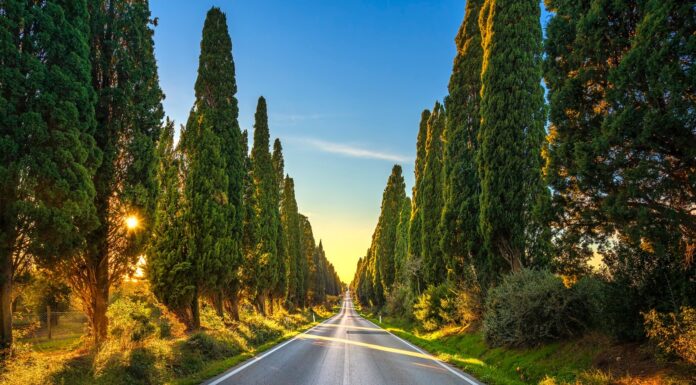The Piazza Venezia is Rome’s central square where the city’s major thoroughfares intersect. Through the strategically located square, visitors (and locals alike) can access Rome’s major historical, commercial, entertainment, and shopping districts. So, what are some of the major things to see in Piazza Venezia?
Located in central Rome, Palazzo Venezia is one of the largest squares in Rome. It’s one of Rome’s busiest areas and is home to popular attractions like Palazzo Venezia, Altar of the Fatherland, Panoramic Terrace, and Palazzo Bonaparte. The square is also close to attractions like the Forum of Augustus, Capitoline Museums, and Trajan’s Column.
In this article, we take a closer look at Rome’s most central square, the Piazza Venezia. Ready? Let’s dive in.
History of Piazza Venezia, Rome
The Piazza Venezia is among the squares that have experienced the most alterations through the years. It has been re-adapted several times and owes its name to the massive palace built in 1455 after being commissioned by Pietro Barbo (cardinal of Venice who was elected pope). It was designed by Leon Battista Alberti, who was a popular Renaissance architect. The palace was donated to the Republic of Venice in 1545, where it became known as Palazzo Venezia.
What to See in Piazza Venezia, Rome
Here are some of the must-see attractions in the square:
1. Palazzo Venezia (National Museum)
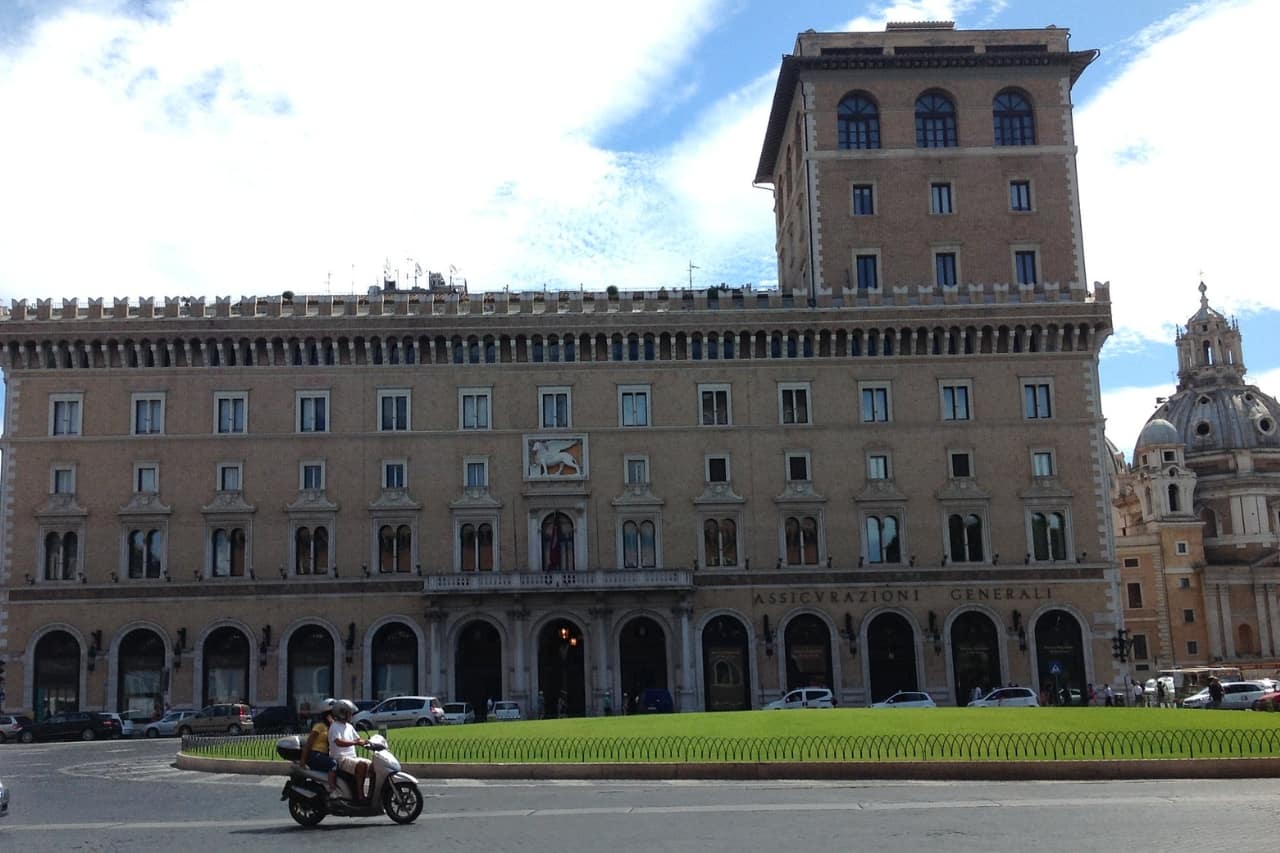
The Palazzo Venezia is a Roman palace located between the popular Piazza Venezia and Via del Plebiscito. It was commissioned by Pietro Barbo back in the 15th century and houses the National Museum of Palazzo Venezia.
The museum was founded in 1921 and boasts a rich collection of medieval and Renaissance works. In addition to artwork, you’ll enjoy viewing sets of ceramics, silverware, furniture, jewelry, and even sacred paraments. It opens at 9.30 am and closes at 7.30 pm, and is a great stop if you’re big on art and want a taste of ancient artwork and designs.
2. Altar of the Fatherland
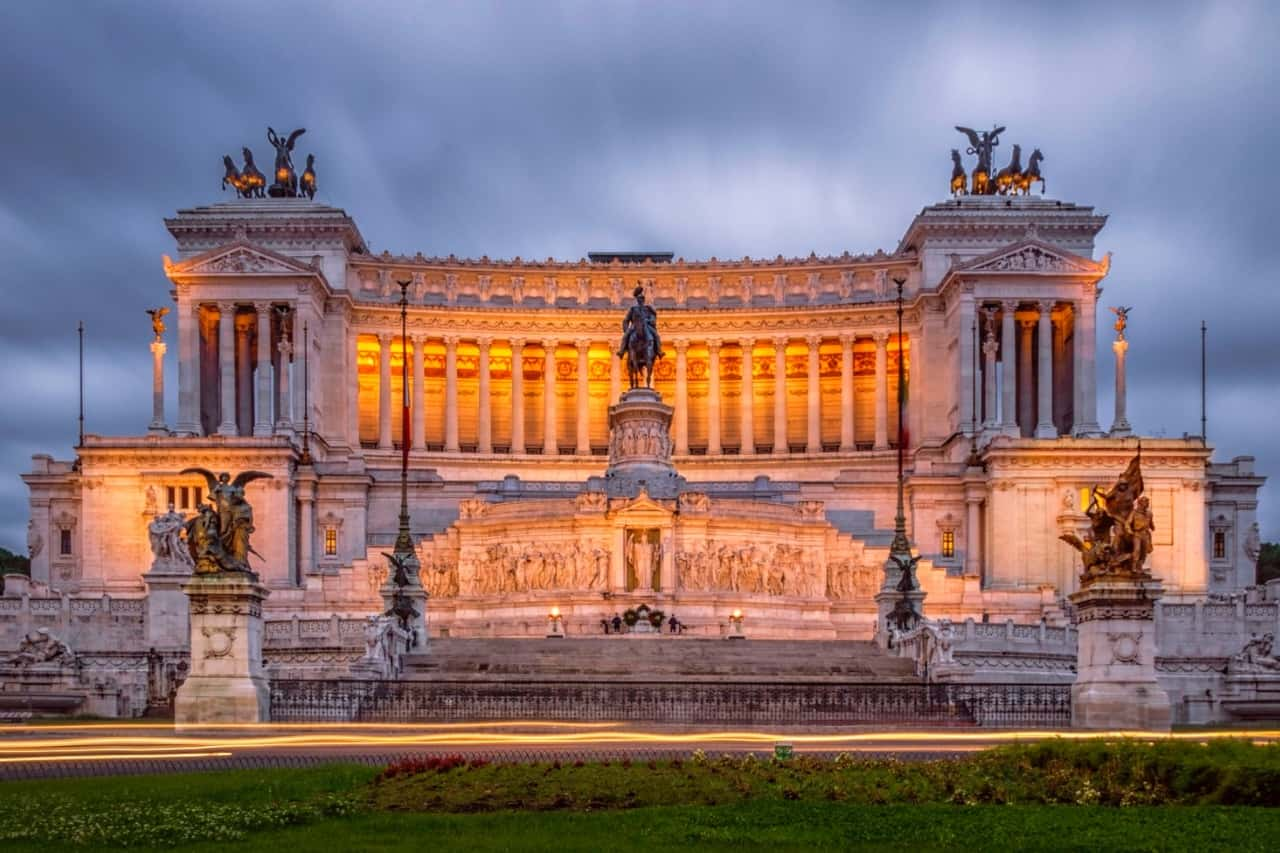
Arguably Rome’s most notable monument, the Altar of the Fatherland was built for several years from 1885 to 1935 despite being inaugurated in 1911. It features a huge portico with classical columns and is characterized by a sweeping staircase (243 steps) that leads to the statue of the goddess Roma.
Just above the altar is the famous statue of Victor Emmanuelle II, who is seated on a horse. The popular attraction celebrates Italy’s unification and symbolizes the struggle for independence. It’s definitely a sight to behold and a must-view attraction when in Piazza Venezia.
3. Panoramic Terrace
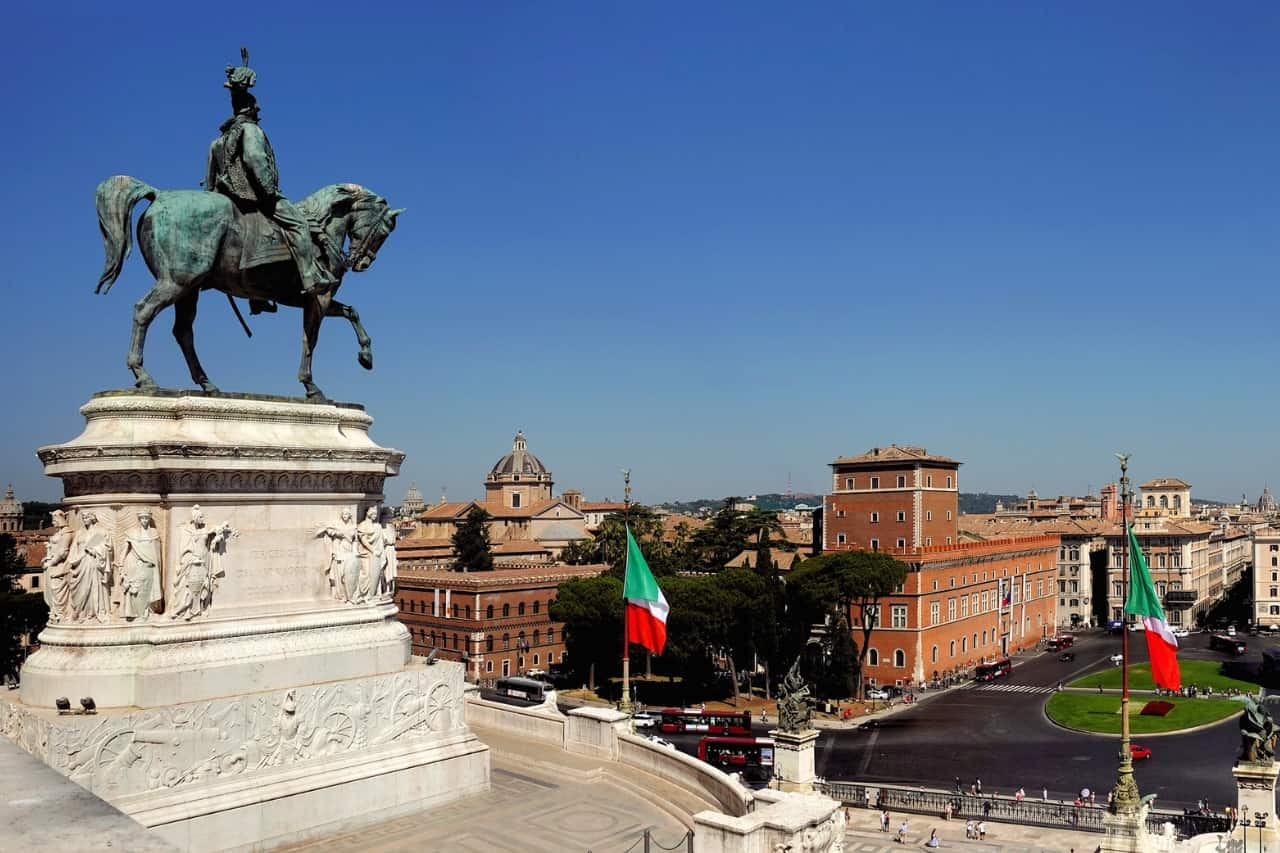
Treat yourself to a breathtaking view of Rome at the Panoramic Terrace at the top of the Vittoriano Complex. Standing 80 meters high on the square, the panoramic terrace gives you a birds-eye view of Rome’s churches, monuments, and palaces.
Some of the popular attractions you’ll enjoy include the Palatine Hill, the Colosseum, and the Roman Forum. The elevators will take you to the terrace of the Altar of the Fatherland, giving you a panoramic view of Rome as you ascend through the transparent walls.
4. Palazzo Bonaparte
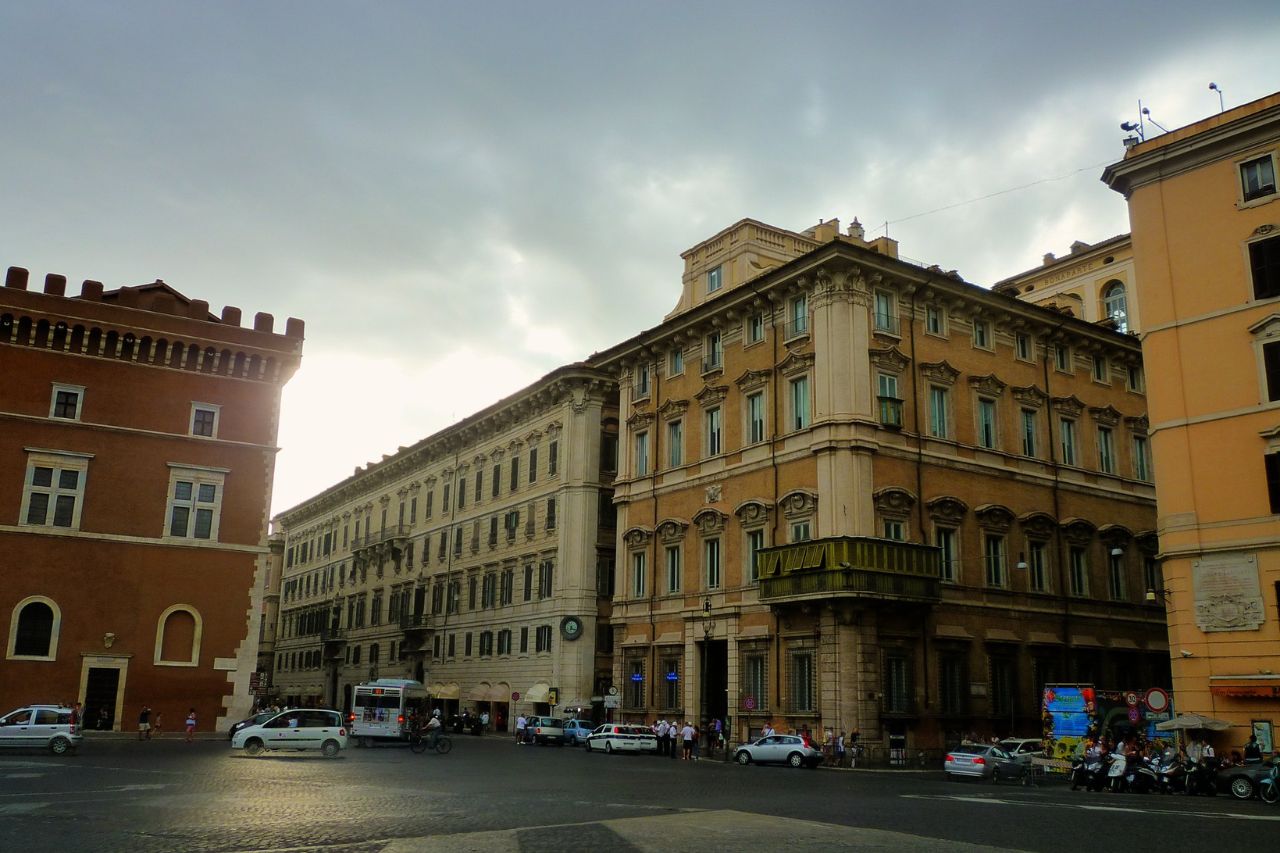
Characterized by mosaics, precious stuccoes and frescoes, and Renaissance-style exteriors, the Palazzo Bonaparte is a must-visit attraction along the Piazza Venezia. The building underwent a special restoration in 2017 and stands out as an art and cultural space in central Rome.
Explore the Palazzo Bonaparte and experience some of the finest art exhibitions in the world. The palace also has a rich history that dates back to 1657.
What to See Around Piazza Venezia
Rome’s popular square is strategically located and close to some top attractions, as explained in this section.
5. Forum of Augustus
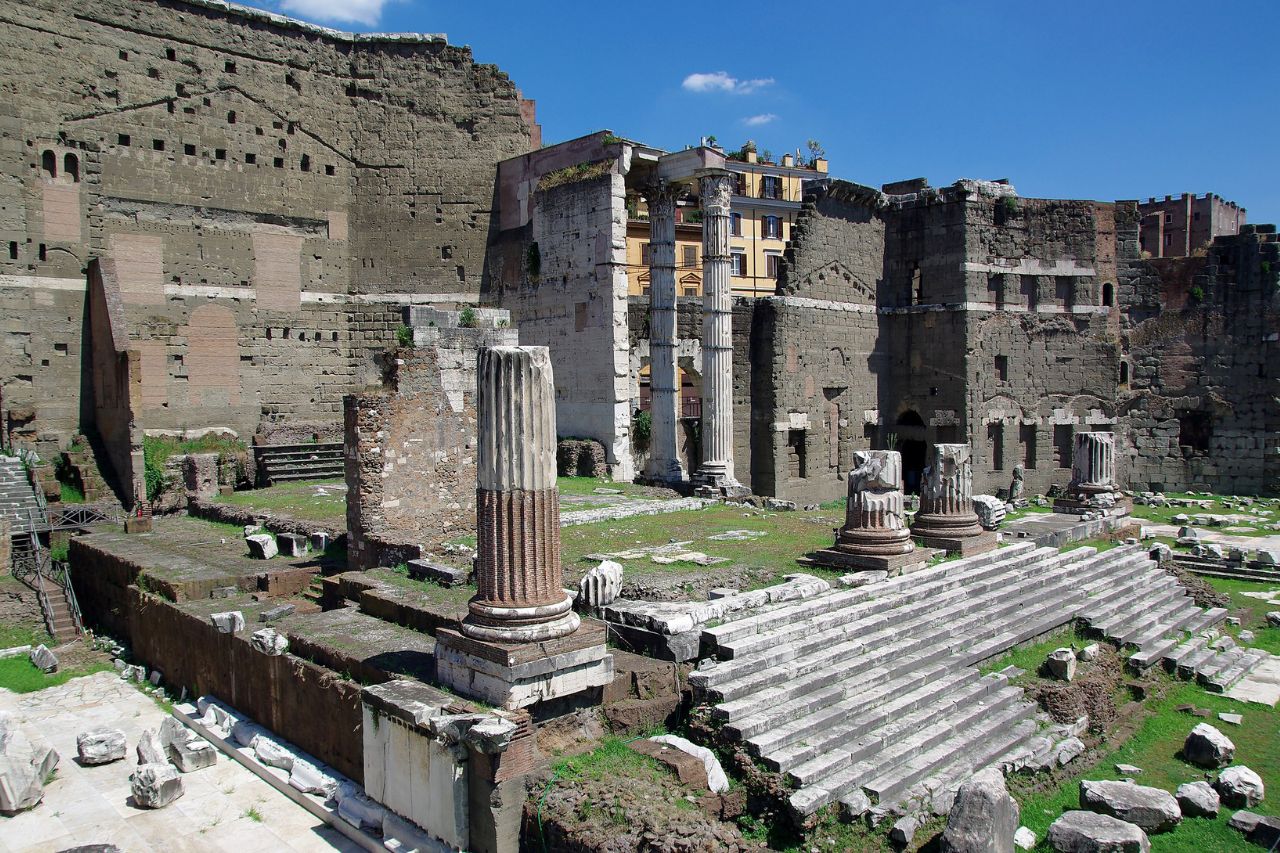
Although mostly in ruins, the Forum of Augustus is an ancient Rome masterpiece that’s worth a visit when in central Rome. The Forum of Augustus might not be as eye-catching as the Colosseum or as popular as the Trevi Fountain, but it holds its own when it comes to statues and sculptures.
It won’t cost you a dime to visit the Forum and get a taste of ancient Rome during the day. You will, however, need to pay for a guided tour at night. A guided tour typically lasts an hour and is highly recommended if you want to appreciate ancient Rome and learn more about the ruins and the forum’s history.
6. Capitoline Museums
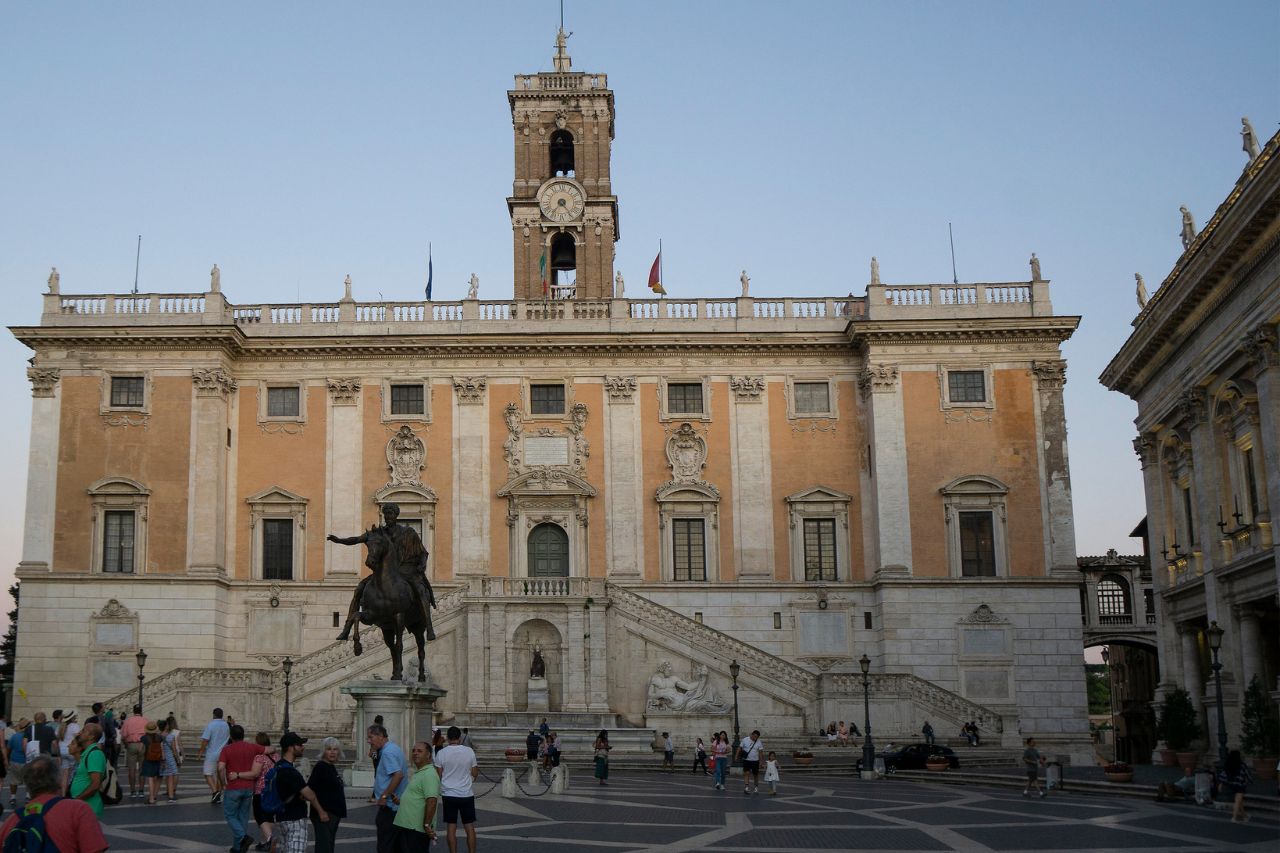
Once done exploring Piazza Venezia and all it has to offer, why not take a short stroll to check out the famed Capitoline Museums? These museums were opened to the public back in the 18th century and contain three main buildings: the Palazzo Senatorio, Palazzo dei Conservatori, and Palazzo Nuovo.
While at the museum, you’ll enjoy ancient Greek and Egyptian sculptures, a rich collection of coins, jewels, and medals, famous sculptures like the Statue of Capitoline Venus, Eros Thanatos, Cupid, and Psyche, and several other works of art. Although generally busy, you can tour the museum any time between 9.30 am and 7.30 pm on all days.
7. Trajan’s Column
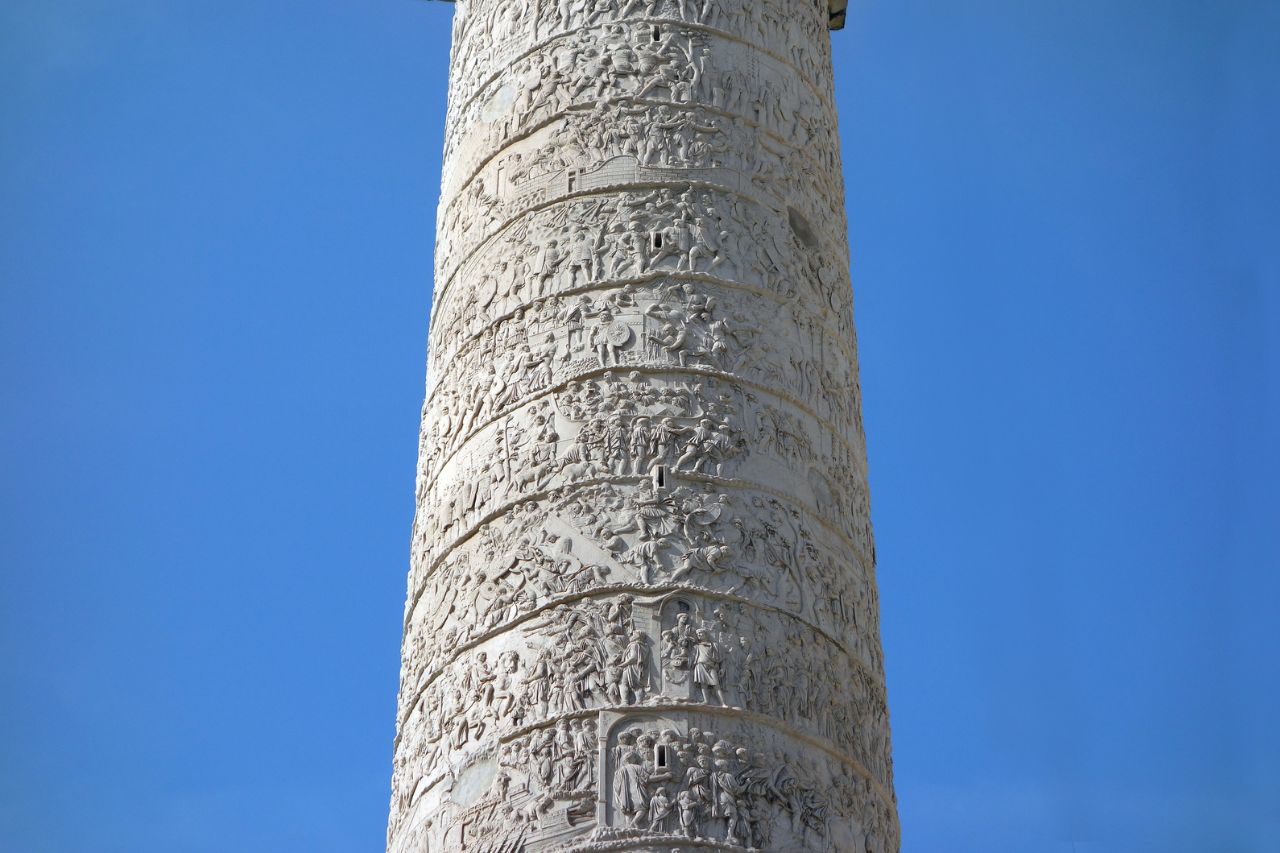
Trajan’s Column is an architectural masterpiece that probably doesn’t get as much credit as it deserves. The triumphal monument was inaugurated back in 113CE and reaches an impressive height of 38.4 meters. The upper half of the column depicts the second Dacian WAR that took place between c.105 and 106 C.E., while the bottom half depicts the first Dacian war (c101-102 C.E)
It opens to the public at 9.00 am and closes at 4.30 pm, so it’s best to plan for a tour before the day comes to a close, as the last entry is at 3.30 pm. You’ll appreciate the level of detail and the brilliant execution of the frieze that depicts a wide range of scenes and activities.
Read more: Roman Columns – 8 Evocative Historical Experiences
Where is Piazza Venezia and How to Get There
Piazza Venezia is located right at the city center and is among the busiest squares in Rome. Its strategic location means you can get to various destinations along the square by foot, bus, metro and even tram.
Buses 40,63, 64, 70, 75, 81, 87, 95, 160 and 170 stop on or close to the piazza. You can also hop on buses 204, 628,630 and 716. Metro lines A and B will also get you close to the Piazza, though you’ll need to walk for around 10-15 minutes to get to the square.
Tram is also another option to get to the Piazza Venezia, as line 8 has its terminal in the square.
How to Visit Piazza Venezia
The Piazza Venezia sits at the base of Capitoline Hill and is home to several iconic buildings and institutions. There are no tickets to access the square as it’s open to the public at all times; you may, however, need to pay to access some of the institutions like Museums and nearby attractions.
For instance, you’ll need to pay to use the panoramic lifts and experience a 360-degree view of Rome on the panoramic terrace. Entrance to the Palazzo Venezia garden is free, but you’ll need to pay to access the museum. The trick is to inquire about hours of operation and pricing in advance to avoid any disappointments when looking to explore attractions in the Piazza Venezia.
FAQs About Piazza Venezia, Rome
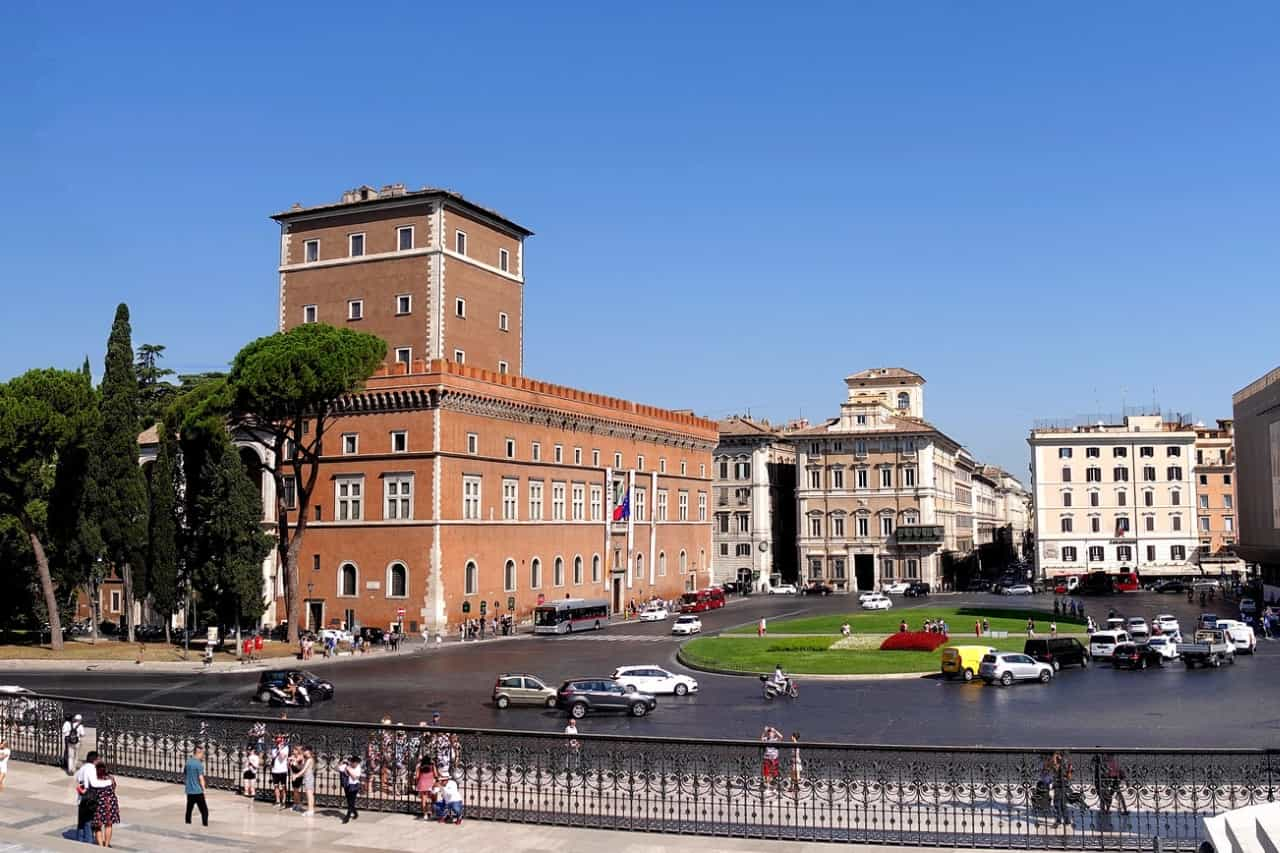
Let’s take a quick look at some of the frequently asked questions about the popular square.
Why is Piazza Venezia Famous?
Piazza Venezia is popular due to its strategic location at the heart of Rome. The square is dominated by iconic monuments like the Altare della Patria and buildings like the Palazzo Venezia, which is home to the National Museum and other institutions. It is also close to nearby attractions like the Capitoline Museums, Trajan’s Column, and the Forum of Augustus.
Did Mussolini Live in Piazza Venezia?
Mussolini was fascinated by the Palazzo Venezia and was determined to make it an official seat of his government due to its strategic location. He moved to the Palazzo Venezia in 1929 and made it the center of his administration and government functions.
Is the Piazza Venezia Free?
The Piazza Venezia is free to visit. There are a lot of free things to do in Rome, and exploring the grand square is one of them. However, it’s worth noting that not all attractions and institutions are free inside the square, as you’ll need to pay to explore the Palazzo Venezia.
Wrapping Up
As arguably one of the most popular Roman squares, the Piazza Venezia has much to offer in terms of culture, history, and entertainment. Sure, its location at the heart of Rome means you’ll have to contend with enormous human traffic due to the bustling activities, but it’s worth exploring if you have some time to spare.
Some of the must-do activities at the Venice Square include exploring the Palazzo Venezia, viewing the Altar of the Fatherland, and taking in a breathtaking view of Rome on the panoramic terrace.
It’s best to explore these attractions earlier in the day before the square comes to life.
Featured Image Credits: Photo by Alessandro Antonini CC BY 2.0 DEED


